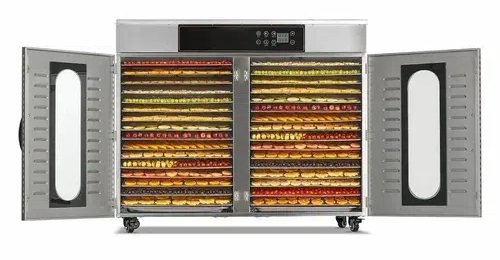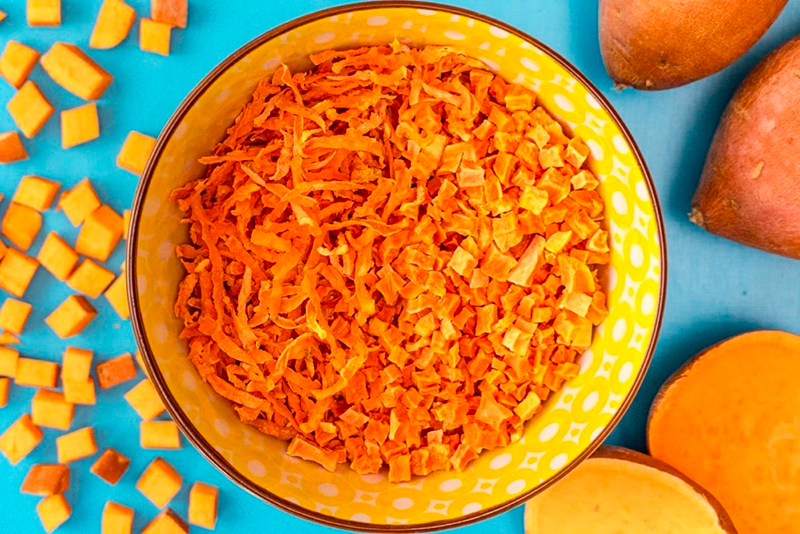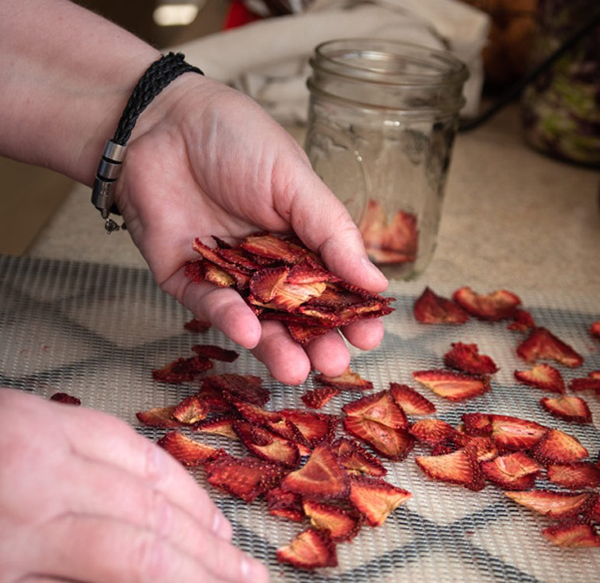Hang type dryers are specialized equipment designed to dry food products by suspending them from hangers within a controlled environment. This method is particularly effective for items such as noodles, sausages, fish, and herbs, where even drying is crucial to prevent spoilage and maintain texture. In this article, we will explore how to achieve optimal results with your hang type dryer, focusing on various aspects such as temperature control, humidity management, airflow optimization, maintenance practices, and more.

Understanding Hang Type Dryers
Hang type dryers utilize a unique design that allows food products to be suspended during the drying process. This arrangement minimizes contact points, reducing the risk of sticking or deformation. The controlled environment ensures that temperature, humidity, and airflow are precisely managed to optimize the drying process, leading to superior product quality and consistency.
Key Features of Hang Type Dryers
1. Controlled Environment: Provides precise control over temperature and humidity.
2. Energy Efficiency: Utilizes heat pump technology that can save up to 75% energy compared to traditional methods.
3. Versatility: Suitable for various food products including fruits, vegetables, and meats.
4. Space-Saving Design: The vertical arrangement of food products allows for efficient use of space in production facilities.
Optimal Temperature Control
Maintaining the right temperature is critical for effective drying. High temperatures can lead to excessive browning or oxidation, while low temperatures may prolong the drying process unnecessarily.
Recommended Temperature Ranges:
- Fruits and Vegetables: 50°C - 60°C
- Meats: 60°C - 70°C
- Fish: 50°C - 65°C
- Herbs: 35°C - 45°C
Using intelligent digital controls allows users to set specific drying cycles tailored to different products, ensuring consistent results every time. Additionally, monitoring temperature fluctuations can help identify potential issues before they affect product quality.

Humidity Management
Humidity control is vital in the hang-type drying process. High humidity levels can slow down moisture removal and lead to uneven drying.
1. Monitoring Humidity: Regularly check humidity levels using built-in sensors. Many modern hang type dryers come equipped with digital displays that provide real-time humidity readings.
2. Adjusting Airflow: Increase airflow when humidity levels rise to facilitate faster moisture removal. This can be achieved by adjusting fan speeds or repositioning fans within the drying chamber.
Airflow Optimization
Proper airflow is essential for uniform drying. The suspended arrangement of products allows maximum surface area exposure to airflow.
1. Air Circulation Systems: Implement custom air circulation systems designed for specific product types. For instance, some products may require horizontal airflow while others benefit from vertical airflow.
2. Fan Placement: Position fans strategically within the drying chamber to ensure even distribution of air. Experimenting with different fan placements can help identify the most effective configuration for your specific products.
Maintenance and Cleaning
Regular maintenance and cleaning are essential for ensuring the longevity and optimal performance of hang type dryers.
1. Cleaning Schedule: Develop a routine cleaning schedule for the drying chamber and hangers. Cleaning should be performed after each batch or at least daily to prevent contamination.
2. Inspection of Components: Periodically inspect mechanical components such as fans and motors. Lubricate moving parts as needed and replace any worn-out components promptly.
Customization Options
Manufacturers often provide customization options for hang type drying machines to meet specific requirements:
1. Modifications to Hanger Design: Tailoring the hanger design for different product shapes can enhance drying efficiency. For example, specialized hangers can be created for delicate herbs or bulky meat cuts.
2. Chamber Size Adjustments: Customizing chamber size based on production volumes ensures that you can maximize your output without compromising on quality.
3. Tailored Control Systems: Developing control systems that meet specific operational needs allows businesses to integrate their existing processes with new technology seamlessly.
Best Practices for Loading Products
How you load your products into the dryer can significantly impact the efficiency of the drying process:
1. Avoid Overloading: Ensure that there is enough space between each item to allow for proper airflow. Overloading can lead to uneven drying and longer processing times.
2. Uniform Sizing: Try to load products of similar sizes together. This helps maintain consistent drying times across all items.
3. Orientation Matters: Hang items in a way that maximizes exposure to airflow while minimizing contact points with other items.
Troubleshooting Common Issues
Even with careful monitoring and maintenance, issues may arise during the drying process. Here are some common problems and potential solutions:
1. Uneven Drying:
- Ensure proper airflow throughout the chamber.
- Avoid overcrowding; rearrange items if necessary.
2. Excessive Browning or Cooking:
- Lower the temperature setting.
- Check for hot spots in the dryer that may be causing localized overheating.
3. Moisture Retention:
- Increase airflow or decrease humidity settings.
- Consider extending the drying time if necessary.
4. Odor Transfer Between Batches:
- Clean the dryer thoroughly between batches.
- Use separate hangers for different types of foods when possible.
Energy Efficiency Considerations
Energy consumption is a significant factor in operating costs for food processing facilities. Hang type dryers equipped with heat pump technology offer several advantages:
1. Heat Recovery Systems: These systems recycle heat generated during the drying process, reducing energy consumption significantly.
2. Variable Speed Fans: Using fans with variable speed settings allows you to adjust airflow based on specific product needs, further optimizing energy use.
By implementing these energy-efficient practices, businesses can not only reduce costs but also contribute positively to environmental sustainability.
Conclusion
Hang type dryers represent a significant advancement in food processing technology. Their ability to provide efficient, uniform drying while preserving food quality makes them invaluable tools for manufacturers worldwide. By implementing optimal temperature control, humidity management, airflow optimization, regular maintenance practices, and customization options tailored to specific needs, you can achieve superior results with your hang type dryer.
Investing time in understanding your equipment's capabilities will pay off in terms of product quality and operational efficiency. As you continue to refine your processes and adopt best practices outlined in this article, you'll find that achieving optimal results becomes not just a goal but a standard practice in your food processing operations.

FAQs
1. What types of food can be dried using a hang type dryer?
Hang type dryers are suitable for various foods including noodles, sausages, fish, herbs, fruits like apples and pears, as well as vegetables such as tomatoes and peppers.
2. How does humidity affect the drying process?
High humidity levels can slow down moisture removal and lead to uneven drying. It is essential to monitor and control humidity levels during the drying process.
3. Can I customize my hang type dryer?
Yes, manufacturers offer various customization options including modifications to hanger design, chamber size adjustments, and tailored control systems.
4. What maintenance is required for hang type dryers?
Regular cleaning of the drying chamber and hangers is necessary. Additionally, periodic inspection of mechanical components helps identify potential issues before they lead to breakdowns.
5. How energy-efficient are hang type dryers?
Hang type dryers that utilize heat pump technology can result in energy savings of up to 75% compared to traditional drying methods by recycling heat within the system.
Citations:
[1] https://www.dryeratech.com/hang-type-dryers-the-secret-to-perfectly-dried-products.html
[2] https://patents.google.com/patent/CN110207480A/zh
[3] https://www.dryeratech.com/how-to-optimize-your-hang-type-drying-process.html
[4] https://patents.google.com/patent/WO2017197612A1/zh
[5] https://www.bchydro.com/powersmart/residential/tips-technologies/hang-dry-laundry.html
[6] https://patents.google.com/patent/CN1405396A/zh
[7] https://www.consumer.org.hk/en/press-release/p-555-washer-dryers
[8] https://patents.google.com/patent/WO2016165668A1/zh











